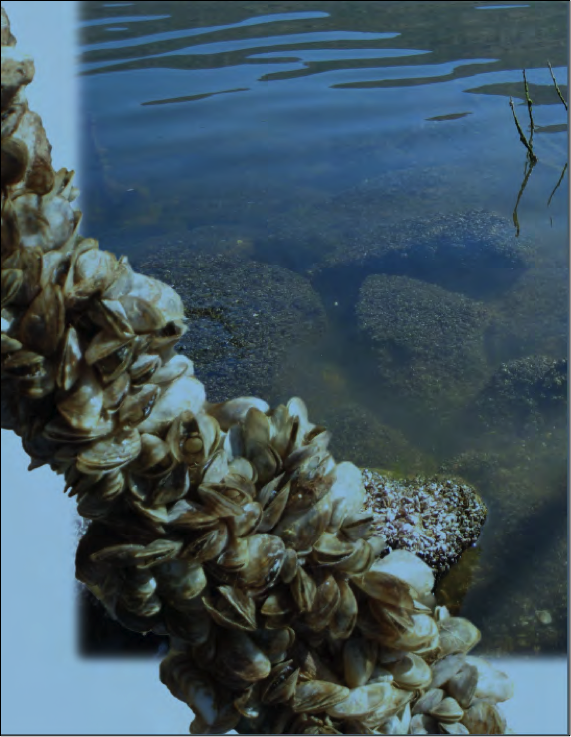The UPDATED Quagga and Zebra Mussel Eradication and Control Tactics Technical Report is now available from UCANR Coastal Resources and from California Sea Grant. This practical and well-researched 36-page report was developed to help lake, reservoir and irrigation district managers prepare for and implement eradication and control strategies for quagga and zebra mussels and other aquatic pests. The report was originally published in January 2013 and has been slightly revised to clarify a few items, add some photographs and update web links. Although most of the original material is unchanged, we encourage anyone who downloaded the original report to replace it with this June 2013 version. The new version can be distinguished by the close-up inset, photo of mussels shown below that has been added to the cover.
We would be delighted to hear from lake, reservoir and irrigation district managers who have used the manual. Are you willing to provide comments on how you have used the manual and the difference it has made? If so, please send an email to Leigh Johnson at ltjohnson@ucanr.edu with the subject line: Mussel Control Manual Feedback and include in the body of the message: your name, organization and contact information. We'll follow up with a few questions. Thanks so much!
The manual explains how to use an Integrated Pest Management (IPM) approach and specific tactics for eradicating and/or controlling invasive dreissenid (quagga and zebra) mussels in lakes, reservoirs and irrigation canals. It covers how to develop and get started on a management strategy, manual and mechanical removal, oxygen deprivation, chemical application, emerging technologies, and an overview of permitting and regulatory processes. The report includes photos and diagrams, successful examples of eradication and control efforts that have used each of the tactics, and extensive weblinks to resources for more information.
It is based in part on presentations by experts at a joint workshop presented by Aquatic Resources Specialist Carolynn Culver of California Sea Grant Extension and by Coastal Resources Advisor Leigh Johnson and Natural Resources Advisor Jodi Cassell of University of California Cooperative Extension in San Diego on February 1-2, 2012.
Attached Images:
